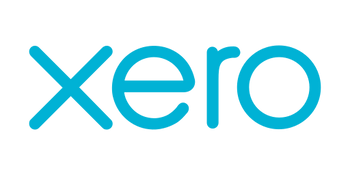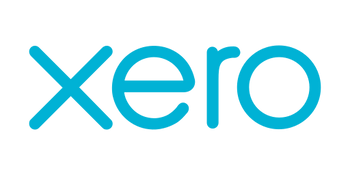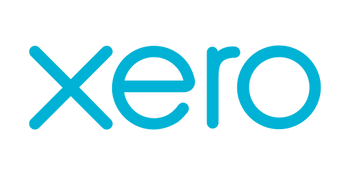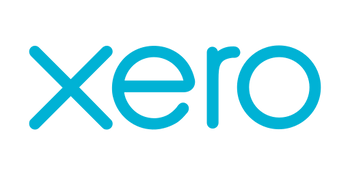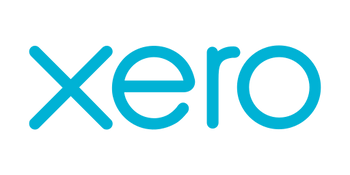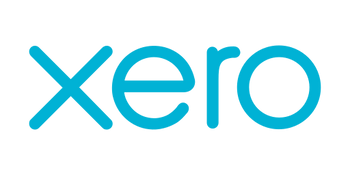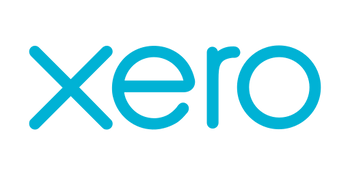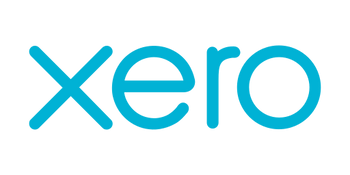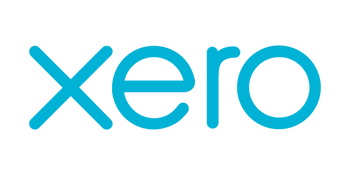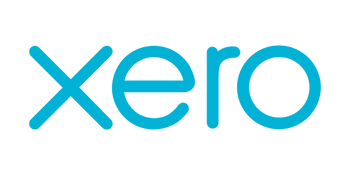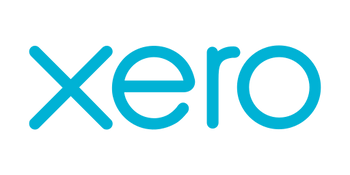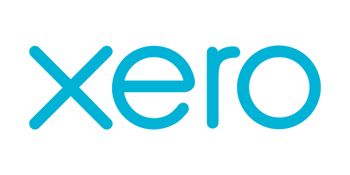{"id":9072551952658,"title":"AdRoll Update a SendRoll Campaign Integration","handle":"adroll-update-a-sendroll-campaign-integration","description":"\u003cbody\u003e\n\n\n \u003cmeta charset=\"utf-8\"\u003e\n \u003ctitle\u003eAdRoll SendRoll Campaign Update | Consultants In-A-Box\u003c\/title\u003e\n \u003cmeta name=\"viewport\" content=\"width=device-width, initial-scale=1\"\u003e\n \u003cstyle\u003e\n body {\n font-family: Inter, \"Segoe UI\", Roboto, sans-serif;\n background: #ffffff;\n color: #1f2937;\n line-height: 1.7;\n margin: 0;\n padding: 48px;\n }\n h1 { font-size: 32px; margin-bottom: 16px; }\n h2 { font-size: 22px; margin-top: 32px; }\n p { margin: 12px 0; }\n ul { margin: 12px 0 12px 24px; }\n \u003c\/style\u003e\n\n\n \u003ch1\u003eSimplify Cross-Channel Marketing: Update SendRoll Campaigns in AdRoll\u003c\/h1\u003e\n\n \u003cp\u003e\n Updating an email-driven advertising campaign shouldn’t be a manual chore that slows the whole marketing engine down. The AdRoll \"Update a SendRoll Campaign Integration\" capability lets marketing and operations teams change how an existing email-to-display campaign behaves — who it targets, what it says, when it runs, and how much is invested — without juggling spreadsheets or waiting for developer cycles.\n \u003c\/p\u003e\n \u003cp\u003e\n For leaders focused on business efficiency and digital transformation, this feature matters because it turns campaign configuration into a fast, repeatable process. When integrated into workflow automation and AI systems, it becomes a lever for rapid experimentation, tighter audience targeting, and consistent message delivery across email and display channels.\n \u003c\/p\u003e\n\n \u003ch2\u003eHow It Works\u003c\/h2\u003e\n \u003cp\u003e\n In plain business terms, this capability gives you a single control point to change the behavior of an email-driven ad campaign that pairs your SendRoll email lists with AdRoll display placements. Instead of exporting lists, editing settings in multiple systems, and waiting for changes to propagate, teams can update campaign settings directly from their marketing workflow—everything from audience rules and creative variations to scheduling and budget allocation.\n \u003c\/p\u003e\n \u003cp\u003e\n Think of it as updating a live playbook. You can change the target audience to reflect a new customer segment, swap in revised messaging based on recent product news, shift send times to match engagement trends, or reassign budget to the highest-performing creative — all without interrupting the campaign lifecycle. When this capability is connected to automation platforms, changes happen reliably and at scale, removing manual touchpoints that introduce delays and errors.\n \u003c\/p\u003e\n\n \u003ch2\u003eThe Power of AI \u0026amp; Agentic Automation\u003c\/h2\u003e\n \u003cp\u003e\n Where this feature becomes transformative is when it’s paired with AI integration and agentic automation. AI agents can watch campaign performance, diagnose issues, and act autonomously or recommend actions. That turns reactive work into proactive optimization: your systems detect a drop in open rates or conversions and either adjust parameters automatically or propose changes to a human reviewer.\n \u003c\/p\u003e\n \u003cul\u003e\n \u003cli\u003eAutomated monitoring agents that surface which audience segments are underperforming and update targeting rules automatically to improve relevance.\u003c\/li\u003e\n \u003cli\u003eCreative optimization bots that A\/B test email content and swap in the best-performing variant across display placements without manual updates.\u003c\/li\u003e\n \u003cli\u003eScheduling assistants that align send and display timing to audience time zones and engagement patterns, increasing visibility when users are most receptive.\u003c\/li\u003e\n \u003cli\u003eBudget reallocation agents that shift ad spend in near real-time toward higher ROI segments or creatives, preventing wasted spend on underperforming slices.\u003c\/li\u003e\n \u003cli\u003eCompliance and quality-check agents that verify content and audience settings against brand guidelines and regulatory requirements before applying changes.\u003c\/li\u003e\n \u003c\/ul\u003e\n\n \u003ch2\u003eReal-World Use Cases\u003c\/h2\u003e\n \u003cul\u003e\n \u003cli\u003e\n A retail brand running a seasonal promotion uses an AI assistant to detect which email subject lines drive the most sign-ups. The assistant updates the campaign content across SendRoll and AdRoll so the winning message appears in both inboxes and display ads, increasing cross-channel consistency and conversion.\n \u003c\/li\u003e\n \u003cli\u003e\n A software company segments prospects by product interest and engagement score. When one segment starts underperforming, a workflow bot updates audience thresholds and shifts budget to the higher-performing segments in minutes, avoiding wasted ad spend and accelerating pipeline momentum.\n \u003c\/li\u003e\n \u003cli\u003e\n An e-commerce operator launches a flash sale in multiple regions. A scheduling agent staggers send and display times by local peak hours, updates headlines with region-specific offers, and scales budgets programmatically where demand spikes — all while product and revenue teams track consolidated results.\n \u003c\/li\u003e\n \u003cli\u003e\n A financial services marketer uses compliance-checking agents to ensure regulatory language is present when targeting specific customer classes. Only campaigns that pass these checks are updated, reducing manual review time and minimizing compliance risk.\n \u003c\/li\u003e\n \u003cli\u003e\n A B2B marketing team integrates lead-scoring signals into campaign rules. When a lead reaches a threshold, an automation updates the audience to receive a higher-intent nurture stream and increases display investment to accelerate conversion.\n \u003c\/li\u003e\n \u003c\/ul\u003e\n\n \u003ch2\u003eBusiness Benefits\u003c\/h2\u003e\n \u003cp\u003e\n When organizations apply this update capability inside automated flows and AI-driven decision loops, the outcomes are concrete and measurable. Here’s how business leaders typically see impact.\n \u003c\/p\u003e\n \u003cul\u003e\n \u003cli\u003e\n Faster iteration cycles: Changes that used to take hours or days can happen in minutes, enabling more frequent testing and quicker optimization of creatives, audiences, and budgets.\n \u003c\/li\u003e\n \u003cli\u003e\n Reduced operational friction: Automations eliminate repetitive manual steps, freeing marketing and ops teams to focus on strategy rather than configuration.\n \u003c\/li\u003e\n \u003cli\u003e\n Better budget efficiency: Dynamic budget allocation steers spend to the highest-performing channels and audiences, improving ROI and reducing wasted ad dollars.\n \u003c\/li\u003e\n \u003cli\u003e\n Fewer errors and compliance risks: Automated checks and standardized update flows cut down on misconfigurations and ensure campaigns meet brand and regulatory standards.\n \u003c\/li\u003e\n \u003cli\u003e\n Improved cross-team collaboration: Centralized, automated updates create a single source of truth for campaign settings, so creative, analytics, and revenue teams work from the same live view and can move faster together.\n \u003c\/li\u003e\n \u003cli\u003e\n Scalability without headcount: As campaign complexity grows, automation scales the work without proportional increases in staff, supporting growth with predictable processes.\n \u003c\/li\u003e\n \u003c\/ul\u003e\n\n \u003ch2\u003eHow Consultants In-A-Box Helps\u003c\/h2\u003e\n \u003cp\u003e\n Consultants In-A-Box designs the bridge between marketing intent and automated execution. We translate business goals into reliable automation patterns that incorporate the SendRoll-to-AdRoll update capability and layer in AI where it adds the most value. The process starts with mapping decision points — when and why campaigns should change — and ends with resilient automation that respects approvals, compliance, and auditability.\n \u003c\/p\u003e\n \u003cp\u003e\n Practical examples of our work include building monitoring agents that watch conversion funnels and trigger audience updates, designing workflow bots that apply creative winners across channels, and embedding budget-management automations that coordinate spend across email and display. We also implement governance controls so teams keep strategic oversight even as routine changes are automated. The result: faster experiments, clearer accountability, and consistent performance improvements.\n \u003c\/p\u003e\n\n \u003ch2\u003eFinal Thoughts\u003c\/h2\u003e\n \u003cp\u003e\n Updating SendRoll campaigns inside AdRoll is more than a technical convenience — it’s a capability that, when paired with AI integration and workflow automation, reshapes how marketing organizations operate. It removes slow, error-prone steps from the campaign lifecycle; it allows teams to act on signals in real time; and it creates consistent cross-channel experiences that improve engagement and business outcomes. For leaders focused on digital transformation and business efficiency, embedding this capability into automated, agent-driven workflows turns routine campaign changes into strategic levers for growth.\n \u003c\/p\u003e\n\n\u003c\/body\u003e","published_at":"2024-02-15T23:40:09-06:00","created_at":"2024-02-15T23:40:10-06:00","vendor":"AdRoll","type":"Integration","tags":[],"price":0,"price_min":0,"price_max":0,"available":true,"price_varies":false,"compare_at_price":null,"compare_at_price_min":0,"compare_at_price_max":0,"compare_at_price_varies":false,"variants":[{"id":48049905795346,"title":"Default Title","option1":"Default Title","option2":null,"option3":null,"sku":"","requires_shipping":true,"taxable":true,"featured_image":null,"available":true,"name":"AdRoll Update a SendRoll Campaign Integration","public_title":null,"options":["Default Title"],"price":0,"weight":0,"compare_at_price":null,"inventory_management":null,"barcode":null,"requires_selling_plan":false,"selling_plan_allocations":[]}],"images":["\/\/consultantsinabox.com\/cdn\/shop\/products\/1e73ccf2eca5a1f19967cfdb90c77ec3_0cfe6610-b733-4ab3-acce-4268d490cd7d.png?v=1708062010"],"featured_image":"\/\/consultantsinabox.com\/cdn\/shop\/products\/1e73ccf2eca5a1f19967cfdb90c77ec3_0cfe6610-b733-4ab3-acce-4268d490cd7d.png?v=1708062010","options":["Title"],"media":[{"alt":"AdRoll Logo","id":37519590457618,"position":1,"preview_image":{"aspect_ratio":1.0,"height":960,"width":960,"src":"\/\/consultantsinabox.com\/cdn\/shop\/products\/1e73ccf2eca5a1f19967cfdb90c77ec3_0cfe6610-b733-4ab3-acce-4268d490cd7d.png?v=1708062010"},"aspect_ratio":1.0,"height":960,"media_type":"image","src":"\/\/consultantsinabox.com\/cdn\/shop\/products\/1e73ccf2eca5a1f19967cfdb90c77ec3_0cfe6610-b733-4ab3-acce-4268d490cd7d.png?v=1708062010","width":960}],"requires_selling_plan":false,"selling_plan_groups":[],"content":"\u003cbody\u003e\n\n\n \u003cmeta charset=\"utf-8\"\u003e\n \u003ctitle\u003eAdRoll SendRoll Campaign Update | Consultants In-A-Box\u003c\/title\u003e\n \u003cmeta name=\"viewport\" content=\"width=device-width, initial-scale=1\"\u003e\n \u003cstyle\u003e\n body {\n font-family: Inter, \"Segoe UI\", Roboto, sans-serif;\n background: #ffffff;\n color: #1f2937;\n line-height: 1.7;\n margin: 0;\n padding: 48px;\n }\n h1 { font-size: 32px; margin-bottom: 16px; }\n h2 { font-size: 22px; margin-top: 32px; }\n p { margin: 12px 0; }\n ul { margin: 12px 0 12px 24px; }\n \u003c\/style\u003e\n\n\n \u003ch1\u003eSimplify Cross-Channel Marketing: Update SendRoll Campaigns in AdRoll\u003c\/h1\u003e\n\n \u003cp\u003e\n Updating an email-driven advertising campaign shouldn’t be a manual chore that slows the whole marketing engine down. The AdRoll \"Update a SendRoll Campaign Integration\" capability lets marketing and operations teams change how an existing email-to-display campaign behaves — who it targets, what it says, when it runs, and how much is invested — without juggling spreadsheets or waiting for developer cycles.\n \u003c\/p\u003e\n \u003cp\u003e\n For leaders focused on business efficiency and digital transformation, this feature matters because it turns campaign configuration into a fast, repeatable process. When integrated into workflow automation and AI systems, it becomes a lever for rapid experimentation, tighter audience targeting, and consistent message delivery across email and display channels.\n \u003c\/p\u003e\n\n \u003ch2\u003eHow It Works\u003c\/h2\u003e\n \u003cp\u003e\n In plain business terms, this capability gives you a single control point to change the behavior of an email-driven ad campaign that pairs your SendRoll email lists with AdRoll display placements. Instead of exporting lists, editing settings in multiple systems, and waiting for changes to propagate, teams can update campaign settings directly from their marketing workflow—everything from audience rules and creative variations to scheduling and budget allocation.\n \u003c\/p\u003e\n \u003cp\u003e\n Think of it as updating a live playbook. You can change the target audience to reflect a new customer segment, swap in revised messaging based on recent product news, shift send times to match engagement trends, or reassign budget to the highest-performing creative — all without interrupting the campaign lifecycle. When this capability is connected to automation platforms, changes happen reliably and at scale, removing manual touchpoints that introduce delays and errors.\n \u003c\/p\u003e\n\n \u003ch2\u003eThe Power of AI \u0026amp; Agentic Automation\u003c\/h2\u003e\n \u003cp\u003e\n Where this feature becomes transformative is when it’s paired with AI integration and agentic automation. AI agents can watch campaign performance, diagnose issues, and act autonomously or recommend actions. That turns reactive work into proactive optimization: your systems detect a drop in open rates or conversions and either adjust parameters automatically or propose changes to a human reviewer.\n \u003c\/p\u003e\n \u003cul\u003e\n \u003cli\u003eAutomated monitoring agents that surface which audience segments are underperforming and update targeting rules automatically to improve relevance.\u003c\/li\u003e\n \u003cli\u003eCreative optimization bots that A\/B test email content and swap in the best-performing variant across display placements without manual updates.\u003c\/li\u003e\n \u003cli\u003eScheduling assistants that align send and display timing to audience time zones and engagement patterns, increasing visibility when users are most receptive.\u003c\/li\u003e\n \u003cli\u003eBudget reallocation agents that shift ad spend in near real-time toward higher ROI segments or creatives, preventing wasted spend on underperforming slices.\u003c\/li\u003e\n \u003cli\u003eCompliance and quality-check agents that verify content and audience settings against brand guidelines and regulatory requirements before applying changes.\u003c\/li\u003e\n \u003c\/ul\u003e\n\n \u003ch2\u003eReal-World Use Cases\u003c\/h2\u003e\n \u003cul\u003e\n \u003cli\u003e\n A retail brand running a seasonal promotion uses an AI assistant to detect which email subject lines drive the most sign-ups. The assistant updates the campaign content across SendRoll and AdRoll so the winning message appears in both inboxes and display ads, increasing cross-channel consistency and conversion.\n \u003c\/li\u003e\n \u003cli\u003e\n A software company segments prospects by product interest and engagement score. When one segment starts underperforming, a workflow bot updates audience thresholds and shifts budget to the higher-performing segments in minutes, avoiding wasted ad spend and accelerating pipeline momentum.\n \u003c\/li\u003e\n \u003cli\u003e\n An e-commerce operator launches a flash sale in multiple regions. A scheduling agent staggers send and display times by local peak hours, updates headlines with region-specific offers, and scales budgets programmatically where demand spikes — all while product and revenue teams track consolidated results.\n \u003c\/li\u003e\n \u003cli\u003e\n A financial services marketer uses compliance-checking agents to ensure regulatory language is present when targeting specific customer classes. Only campaigns that pass these checks are updated, reducing manual review time and minimizing compliance risk.\n \u003c\/li\u003e\n \u003cli\u003e\n A B2B marketing team integrates lead-scoring signals into campaign rules. When a lead reaches a threshold, an automation updates the audience to receive a higher-intent nurture stream and increases display investment to accelerate conversion.\n \u003c\/li\u003e\n \u003c\/ul\u003e\n\n \u003ch2\u003eBusiness Benefits\u003c\/h2\u003e\n \u003cp\u003e\n When organizations apply this update capability inside automated flows and AI-driven decision loops, the outcomes are concrete and measurable. Here’s how business leaders typically see impact.\n \u003c\/p\u003e\n \u003cul\u003e\n \u003cli\u003e\n Faster iteration cycles: Changes that used to take hours or days can happen in minutes, enabling more frequent testing and quicker optimization of creatives, audiences, and budgets.\n \u003c\/li\u003e\n \u003cli\u003e\n Reduced operational friction: Automations eliminate repetitive manual steps, freeing marketing and ops teams to focus on strategy rather than configuration.\n \u003c\/li\u003e\n \u003cli\u003e\n Better budget efficiency: Dynamic budget allocation steers spend to the highest-performing channels and audiences, improving ROI and reducing wasted ad dollars.\n \u003c\/li\u003e\n \u003cli\u003e\n Fewer errors and compliance risks: Automated checks and standardized update flows cut down on misconfigurations and ensure campaigns meet brand and regulatory standards.\n \u003c\/li\u003e\n \u003cli\u003e\n Improved cross-team collaboration: Centralized, automated updates create a single source of truth for campaign settings, so creative, analytics, and revenue teams work from the same live view and can move faster together.\n \u003c\/li\u003e\n \u003cli\u003e\n Scalability without headcount: As campaign complexity grows, automation scales the work without proportional increases in staff, supporting growth with predictable processes.\n \u003c\/li\u003e\n \u003c\/ul\u003e\n\n \u003ch2\u003eHow Consultants In-A-Box Helps\u003c\/h2\u003e\n \u003cp\u003e\n Consultants In-A-Box designs the bridge between marketing intent and automated execution. We translate business goals into reliable automation patterns that incorporate the SendRoll-to-AdRoll update capability and layer in AI where it adds the most value. The process starts with mapping decision points — when and why campaigns should change — and ends with resilient automation that respects approvals, compliance, and auditability.\n \u003c\/p\u003e\n \u003cp\u003e\n Practical examples of our work include building monitoring agents that watch conversion funnels and trigger audience updates, designing workflow bots that apply creative winners across channels, and embedding budget-management automations that coordinate spend across email and display. We also implement governance controls so teams keep strategic oversight even as routine changes are automated. The result: faster experiments, clearer accountability, and consistent performance improvements.\n \u003c\/p\u003e\n\n \u003ch2\u003eFinal Thoughts\u003c\/h2\u003e\n \u003cp\u003e\n Updating SendRoll campaigns inside AdRoll is more than a technical convenience — it’s a capability that, when paired with AI integration and workflow automation, reshapes how marketing organizations operate. It removes slow, error-prone steps from the campaign lifecycle; it allows teams to act on signals in real time; and it creates consistent cross-channel experiences that improve engagement and business outcomes. For leaders focused on digital transformation and business efficiency, embedding this capability into automated, agent-driven workflows turns routine campaign changes into strategic levers for growth.\n \u003c\/p\u003e\n\n\u003c\/body\u003e"}

